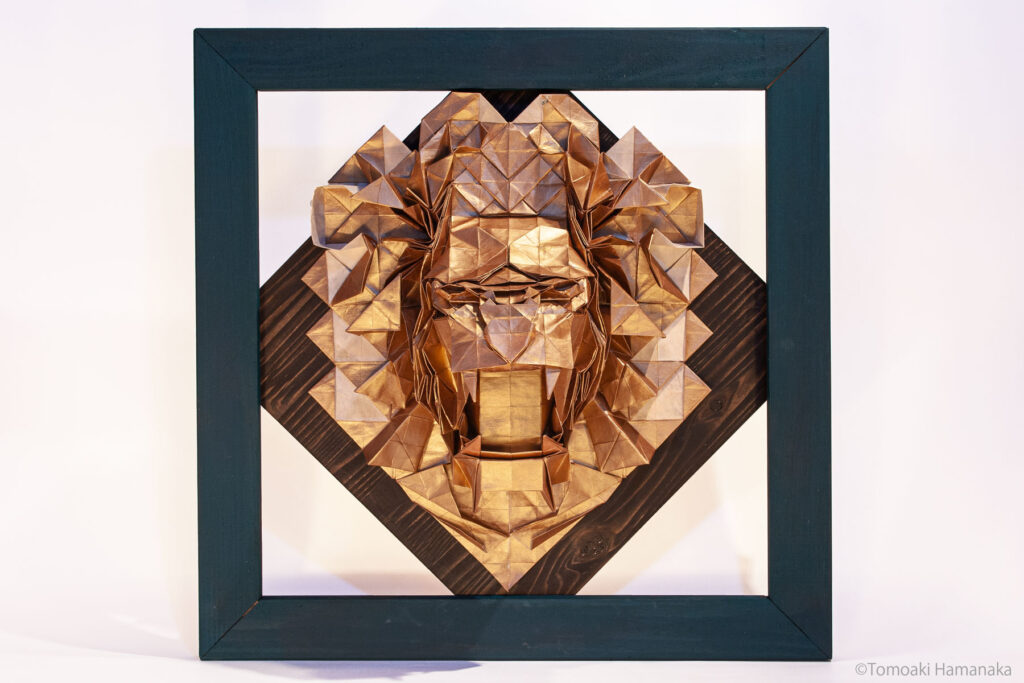
日本語版はこちら
Another Version: S-ORI-LION
INTRODUCTION
It was when I was folding an “ORI INMATURE DEER” that I started to think about starting a project on lion. While researching how to express the body hair of a deer on paper, I found it interesting that I could express the hair in a continuous plane. It was also an interesting discovery that the “displacement” that occurs when paper is made three-dimensional or when the width of the paper folds is changed can be used to fold out the body hair.
I felt that in order to more accurately and profoundly embody what I wanted to express, I needed to pursue ways of expressing fur. The first animal that came to mind as having characteristic body hair was the lion, the king of a hundred beasts.
“Origami” as a method of expression
What is the significance of using origami as a method of expression, i.e., creating a work of art from a single material and a continuous plane? I think there are three main reasons, one of which is the mystique that comes from the difficulty of making a single square, which becomes a leaden fetter as you pursue figurative expression. I believe that by expressing oneself within these limitations, the work takes on a kind of mystique. Just like a stone statue that is made of marble but expresses a soft cloth.
I think I became strongly aware of this characteristic when I saw the work of Fujito Takeki in August. He was carving out the way brown bears and deer live from a single tree. There was an illusion that the very shape he carved was buried in the tree. Although the material is different, I believe that by creating from a square sheet of paper, it is possible to create such a sense of mystery.
Secondly, there is the possibility of communicating the production process. Today’s commercial origami is generally created with the primary goal of communicating the process of creation as an origami diagram. This is because there is no market for the finished work itself, but a market for the production process as books. In contrast to paintings, where the material object (or immaterial data) of the painting, rather than the way it is painted, is generally distributed, the interesting nature of origami as a medium emerges.
In order to communicate the process of creation to people, it is necessary to construct expression within strict limitations, such as materials that are generally easy to obtain and folding procedures that are not too complicated. And by sharing these limitations, we can share the process of creation. As so-called pop art, I think it is a unique property of origami that the work is created in a way that is accessible to the masses.
Thirdly, I think that it is possible to coexist two-dimensional expression and three-dimensional expression without any difficulty; in order to create various forms from a single sheet of paper, it is necessary to consider the dispersion of paper thickness and the control of tension. In order to create various forms from a single sheet of paper, it is necessary to consider the dispersion of the thickness of the paper and the control of the tension, and by considering these factors appropriately, it is possible to create a stable structure with a continuous connection between two-dimensional and three-dimensional forms in a kind of natural way. The work that immediately comes to mind is “Birth 1” by Eric Joisel. In this work, a three-dimensional human being is born out of the cracks of a flat paper.
The flatness of the paper, which is its original characteristic, and the three-dimensional form created by processing the paper are created from the same plane, and the flatness and three-dimensionality emphasize each other. I believe that this characteristic of using paper as a medium is important.
CONCEPT
There are two concepts in this work: one is to superimpose multiple states into one work. The other is to express “feelings”.
1-1. Superimposing multiple states into a single work
My philosophy has always been that all states of things are inherently indivisible, and that the “difference” between states is just a line drawn by human convenience. For example, what is right for someone is always considered wrong for someone else. This is because there is no clear line between right and wrong. If we want to share that something is right, we have to define the criteria strictly and arbitrarily.
Rather than defining the criteria, I prefer to see such opposing concepts as existing quantumly at the same time. I would like to believe that by doing so, we can accept the “state” of things as they are, before they are defined by language. In this work, I attempted to superimpose digital/analog, concrete/abstract, and three-dimensional/two-dimensional states in a single work.
1-2. Expressing “emotion”
I went to the zoo to observe lions. The lions I saw through the glass sleeping in the zoo in the morning when it was raining and there were hardly any people around did not feel real somehow. During the hour I spent just staring at them, two pairs of mating pairs slept through most of it. One of the lions (which was lying exposed to the rain because the female had taken its place as a rain shelter) suddenly woke up and sneezed. It opened its mouth wide, bared its fangs, and looked toward the sky.
I suddenly thought that if I could extract this moment, it would look as if the lion was angry. However, it is only a human’s selfish assumption that lions have emotions in the first place. Even so, when I see the muscle movements that correspond to an angry face in humans, I can’t help but feel some kind of emotion in it. I decided to create this work as a question about the act of projecting oneself onto an object other than oneself and becoming emotionally involved.
DESIGN
2-1. Research on lions
First, I researched the ecology and appearance of the lion in an illustrated book, and then went to the zoo to see the real thing. I also collected images that were similar to the expressions I wanted to create. While researching the lion, I realized that even though it is an animal that everyone knows, it is difficult to capture and visualize its accurate three-dimensional shape.
Especially when it comes to the lion’s face, it is common to imagine a deformed image of it from the front. Because we usually input the image in a flat form, we may not be able to reconstruct the three-dimensional image in our mind. It is ironic that although the image of the lion is shared by most people today through symbolization, the image is actually different from the “real” lion.
2-2. Sketching
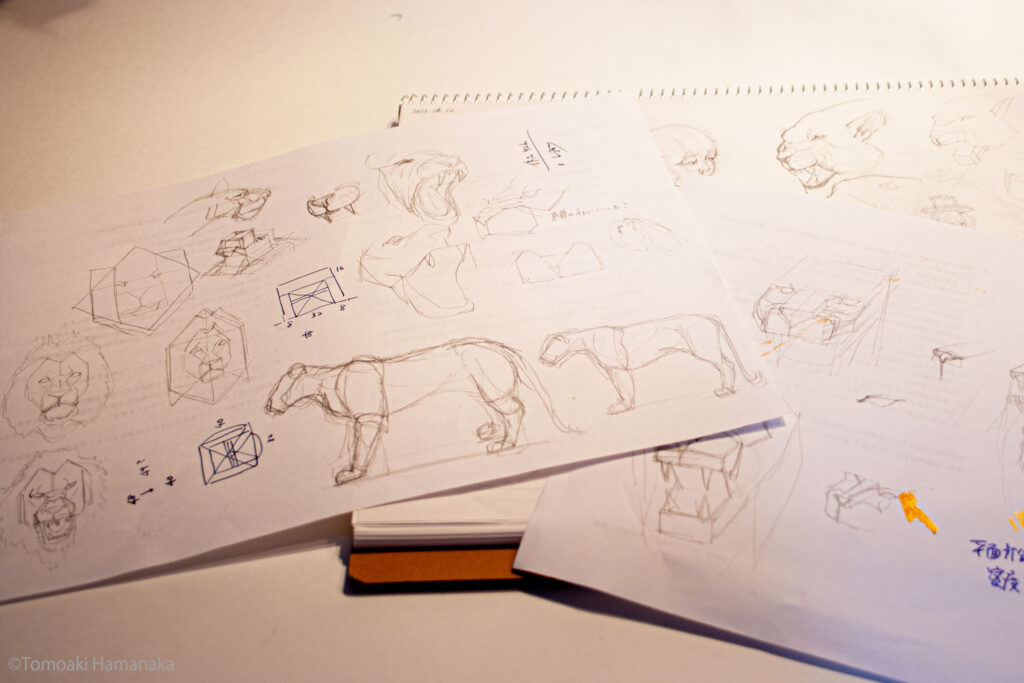
To learn the shape of the lion by hand, I sketch it. It can be seen that at first they are taking the image as a flat plane and are not able to feel the shape of the lion well. Prototype of the basic structure The first step is to make a prototype of the basic structure in a low-quality plane, just like modeling in 3DCG or wood carving.
The most time was spent on the structure from the cheek to the chin, where the paper is folded to make a part of the paper independent, and the curved surface is formed without propagating the distortion of the paper to the surrounding area.
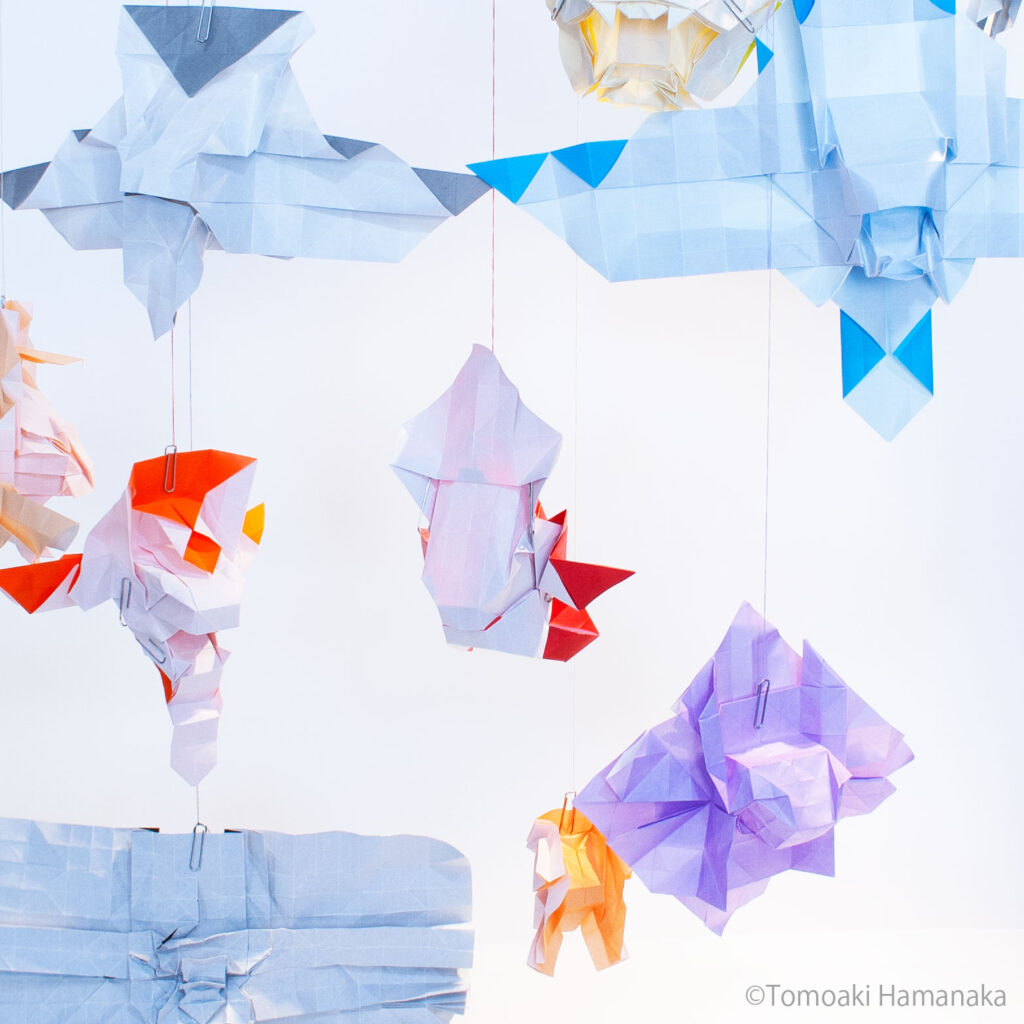
2-3. Three-dimensional understanding of the lion using clay
Since I felt the limit of understanding the three-dimensional form of the lion in the sketch, I re-captured the form in clay. The distance from the nose to the eyes and the basic elements that make up facial expressions were particularly well understood. 5.
Prototype of each part of the face and facial expression Based on the sensations obtained from the clay, I made prototypes of the parts of the face to be placed on the basic structure. I struggled to capture and express the wrinkles that appear on the bridge of the nose. I learned that it is effective to create a minimum overlap of paper that can evoke the image of a lion by folding, rather than completely reproducing a lion.
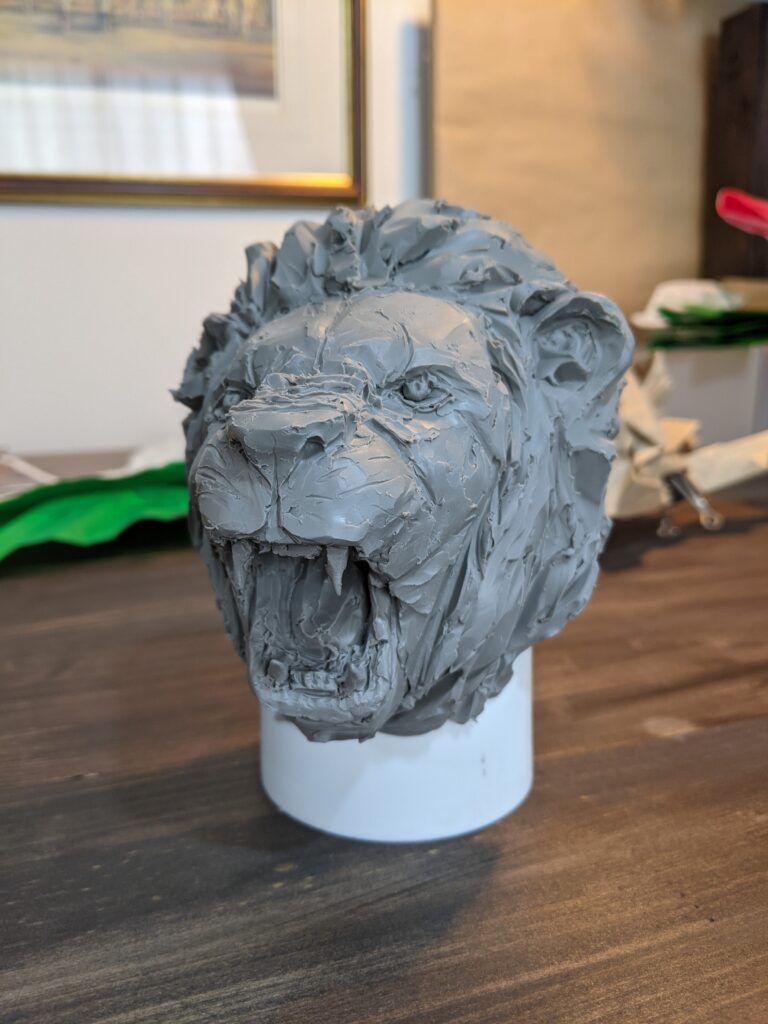
2-4. Overall prototype
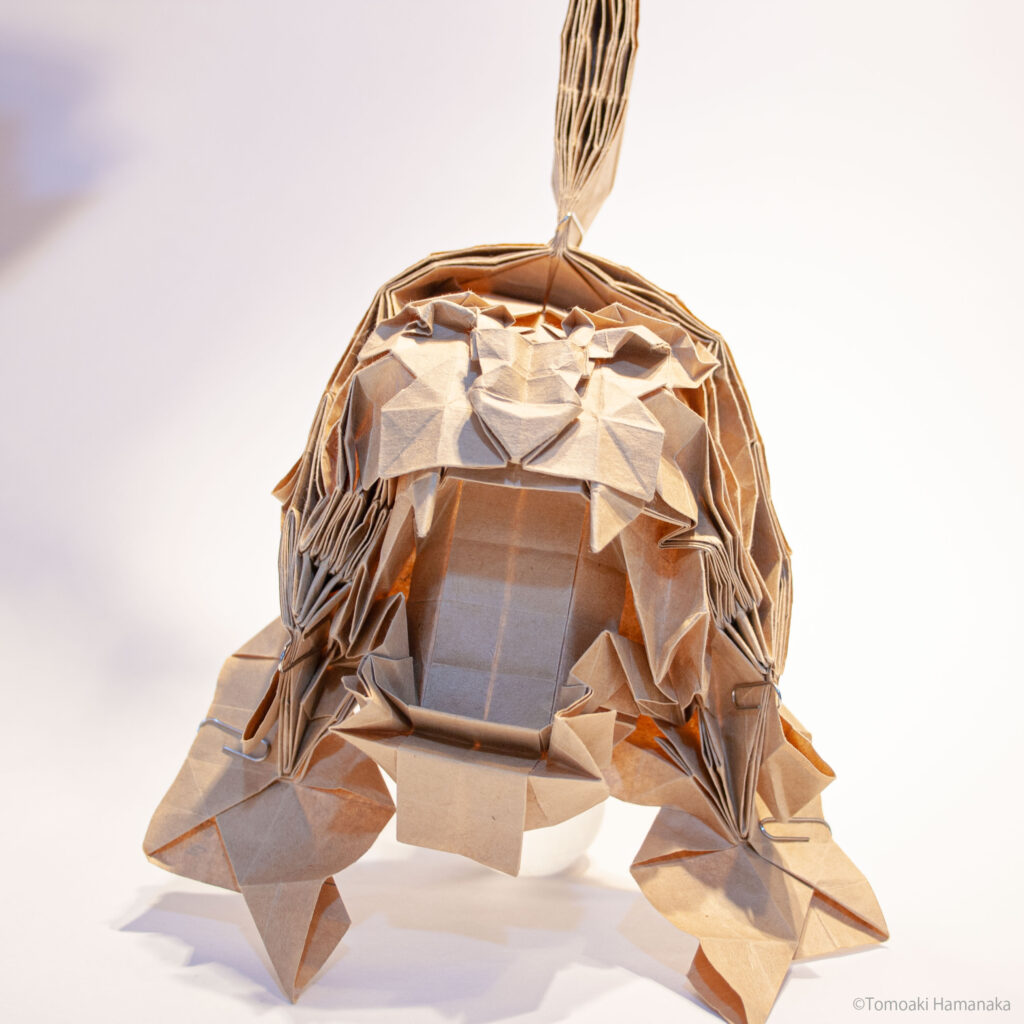
In order to check the consistency and balance of each part, I made an overall prototype. I wanted to minimize the number of equal parts for the entire work to the amount of information I could process with my current skills.
2-5. Main folding in parallel with the final prototype
Not to spoil the improvisational nature of the project, I have not finalized the finished version before the main folding. However, if I repeat the trial and error process with the finished version, the paper will get dented.
Therefore, I try to make a sub work at the same time using the same size paper and do trial and error there. This way, even if I don’t have the development drawings recorded, I can make the same work later on.
PHOTOGRAPHY ART
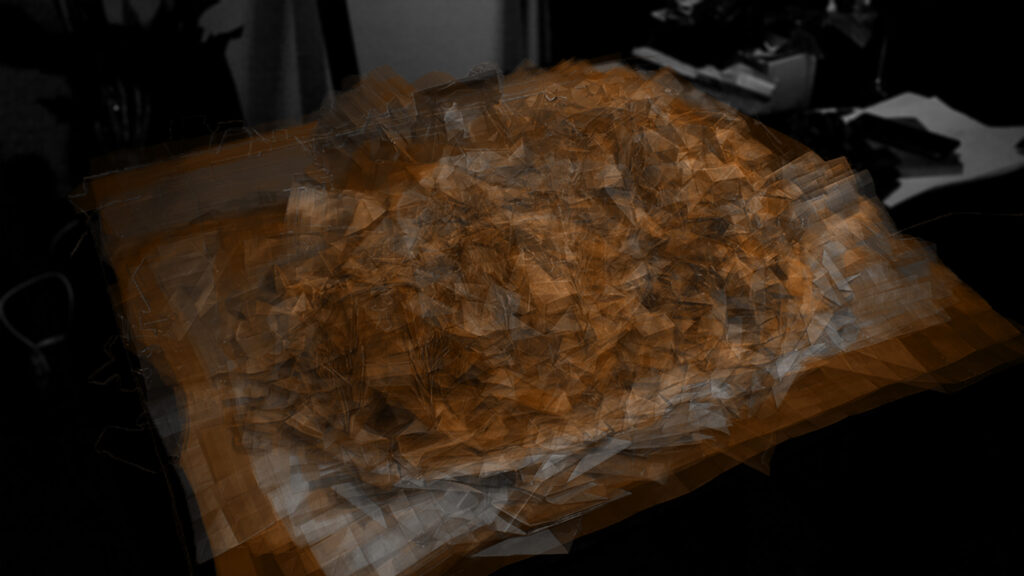
COMPLETE SHAPE
Folding process
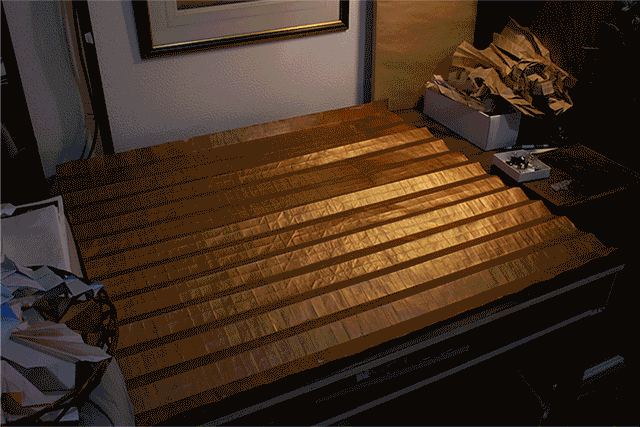
THANK YOU!
I would be happy if you feel something when you look at my work. I believe that only when other people see it can it have value.
Tomoaki.H.

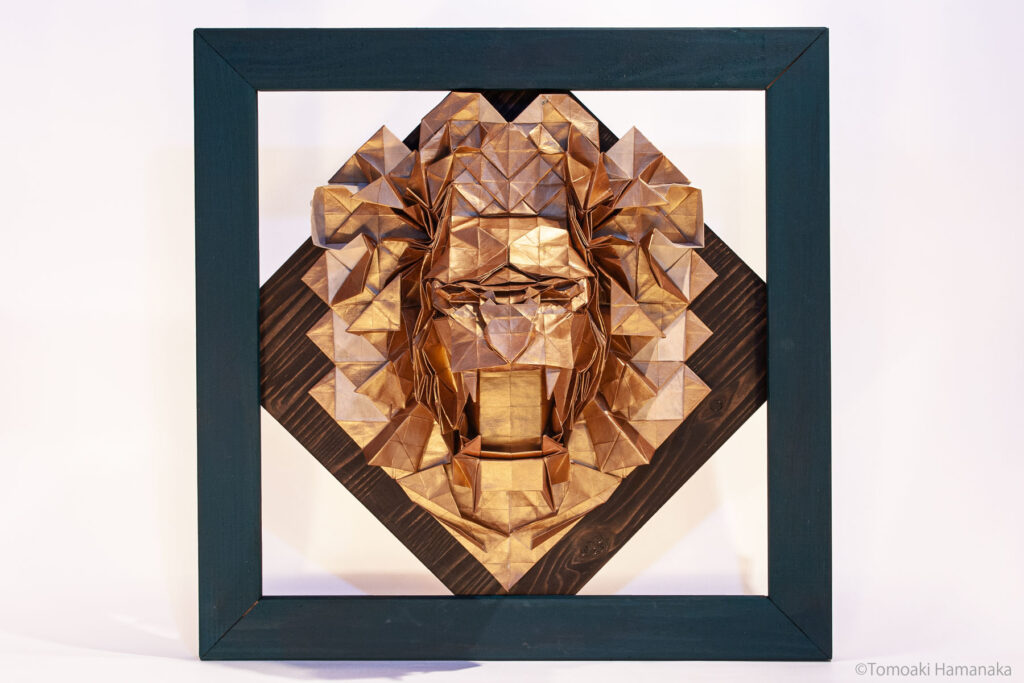
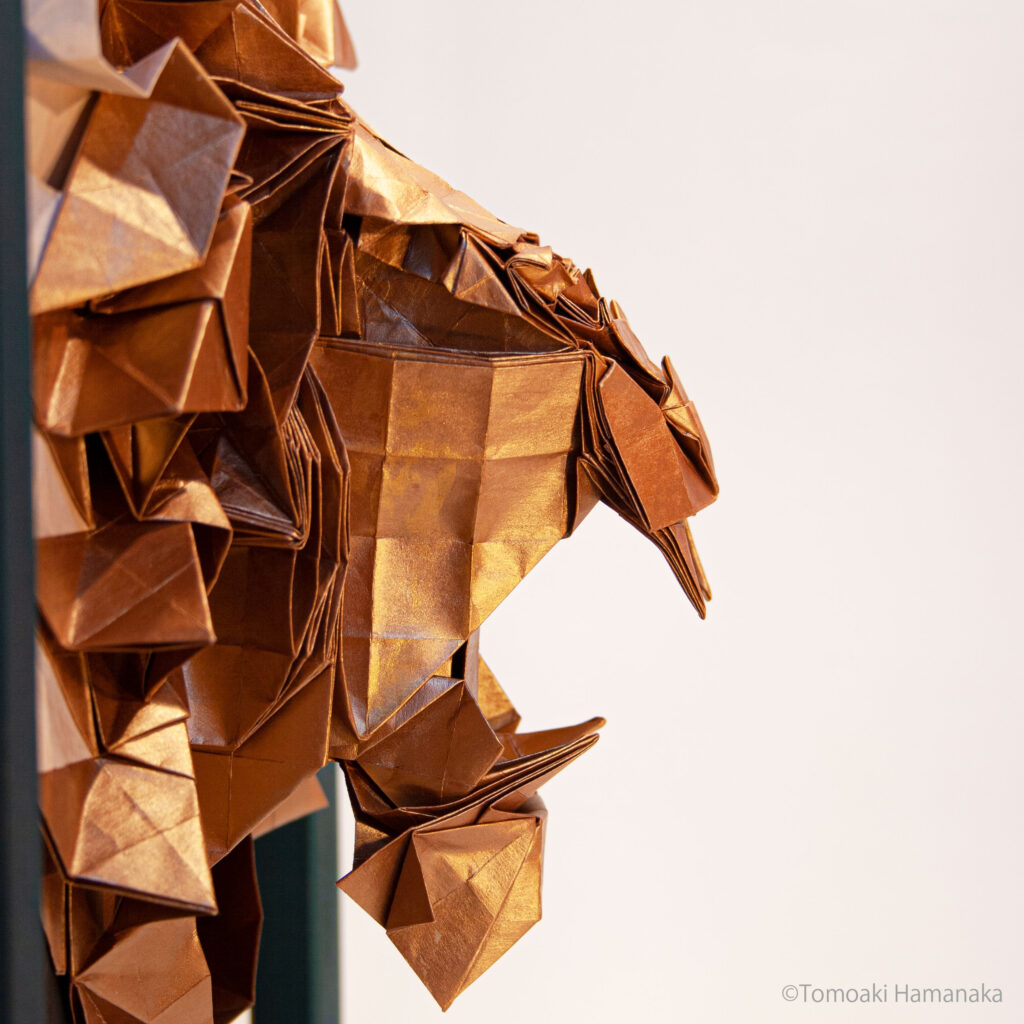
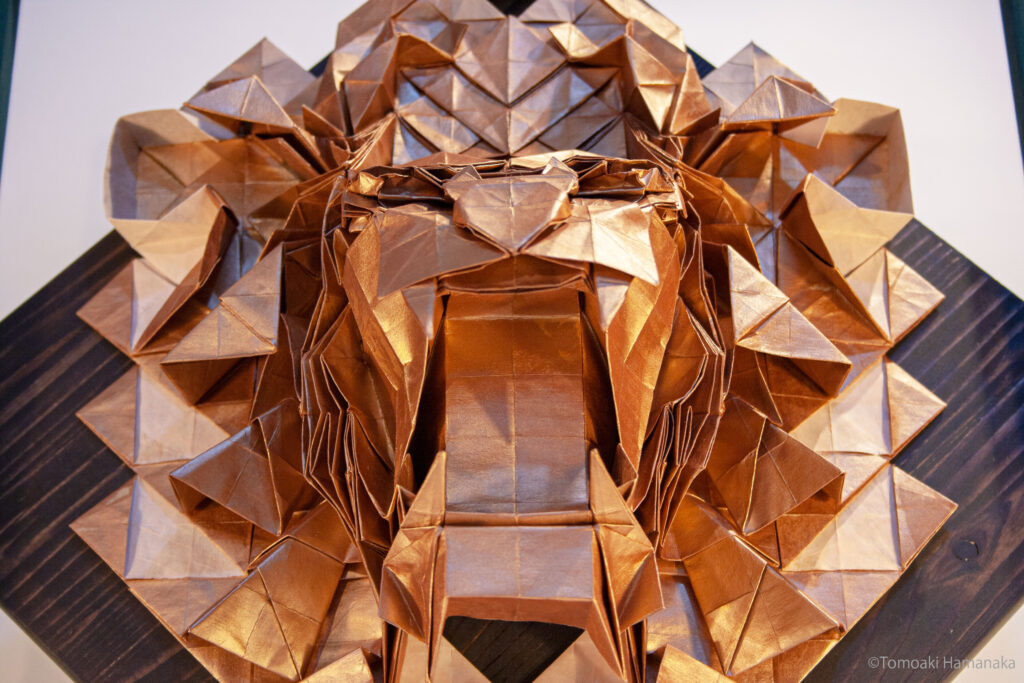
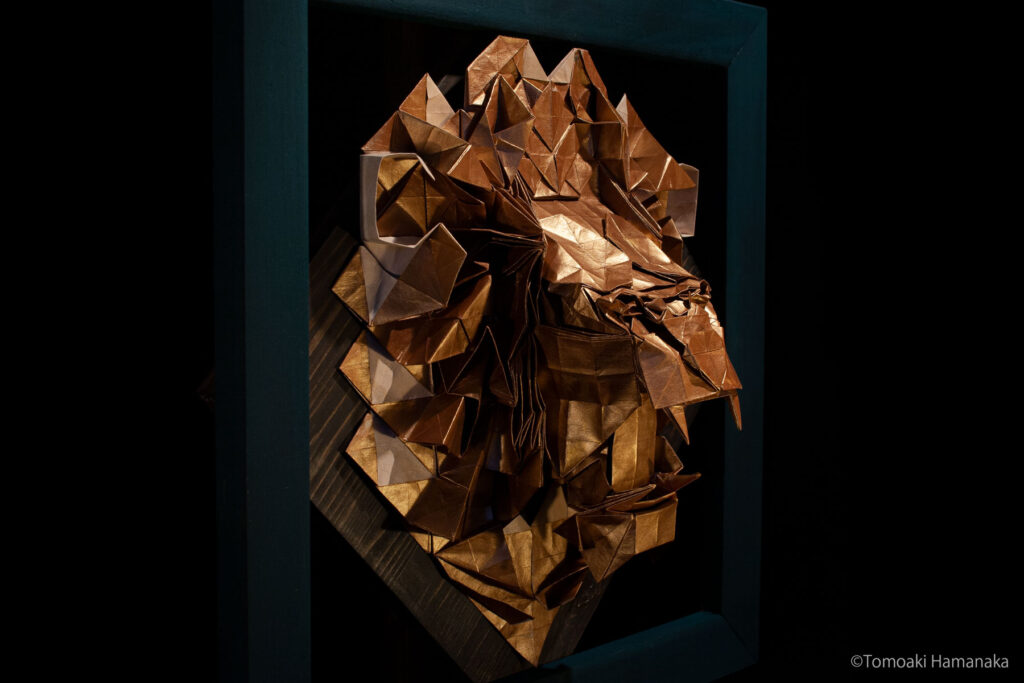

Leave a Reply